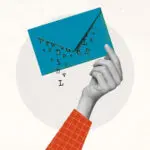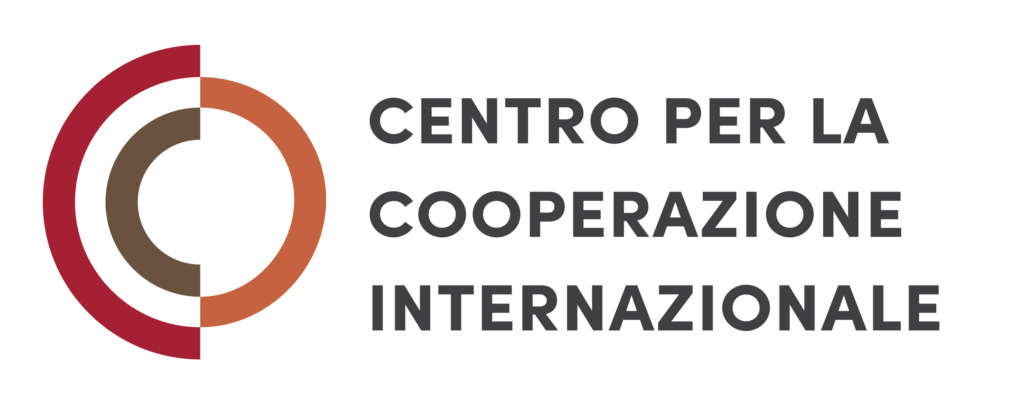Union of Minorities
Conditions of the Slovene minority in Italy and the Italian minority in Slovenia after Ljubljana’s entry into the European Union (EU). An interview with Bojan Brezigar, a journalist and advisor to outgoing Slovenian Foreign Minister, Dimitrij Rupelj
Translation for Osservatorio Balcani: Risto Karajkov
Bojan Brezigar, journalist, managed the daily "Primorski Dnevnik" from 1992 to 2007. He served as president of the European Bureau for Lesser-Used Languages (EBLUL) from 1998 to 2005. He was an advisor to Foreign Minister Dimitrij Rupel and, in 2008, he served as a spokesman of the Slovenian presidency of the EU. He is also a president of the joint institutional commission for the Slovene minority in Italy.
Slovenia’s entry into the EU and subsequently into the Schengen area has caused the border with Italy to vanish. Or, does some trace remain?
We are undergoing historic processes. Slovenia has been on a very fast track: starting basically from zero, it managed, after only 17 years, to enter the Schengen area and to preside over the EU. We are, nevertheless, talking about a process. There are still problems; much smaller than in the past, but what is important is the new method, the constant effort to reach a solution. I would want to emphasise that especially in the border region, primarily on the Italian side, the climate has changed. The distance, not to say the resentment, no longer exists towards those on the other side of the border. There has been an enormous progress with integration.
One dispute that remains open between Italy and Slovenia concerns Italian property across the border. After the end of Yugoslavia, Slovenia was, to some extent, involved in the issue. Are there still problems with this issue?
The problem of property had been resolved with the Rome Treaty, following the Osimo Accord. According to this treaty, Yugoslavia was obligated to pay a certain amount in annual instalments. After Yugoslavia collapsed, this amount was divided between Slovenia and Croatia. Slovenia respected its commitments completely, paying its debt by transfers to a Luxembourg account. However, Italy has not yet used this payment, arguing that the Rome agreement was a single treaty, and that consequently Croatia also must respect its obligations, which, however, had not happened. As far as Ljubljana is concerned, this issue is no longer under dispute. In addition, Slovenia aligned with EU regulation concerning acquisition of real estate by other EU nationals; thus, the market is mostly free in this sector.
What are the relations between Slovenia and the Slovene minority in Italy?
The relations are typical of those existing between a country and its ethnic minority abroad; not much different from those between Italy and the Italian minority in Slovenia. Differences arise from the different modalities of organizing, and above all, those relating to the size of the minority population. The Slovenes in Italy are much more numerous than the Italians in Slovenia.
How many are they?
This is a difficult question. Approximately ten years ago, the Italian Ministry of Interior estimated around 70,000 ethnic Slovenians lived in Italy. I do not know if this number is still valid or not. I cite it in order to suggest the order of magnitude; it featured in the first report on linguistic minorities in Italy.
And the Italians in Slovenia?
The number revolves around 2,000 – 3,000 people.
Did the situation of the Slovene minority in Italy change because of the European unification process?
In the whole of Europe, you will not find a single minority without open issues. Even the better-protected minorities, including, for example, the Germans in Alto Adige, request new standards or entitlements. As regards the Slovenes in Italy, I have to say that from a normative point of view the situation has noticeably improved. Law 38, passed in 2001, concerned the protection of the Slovene minority. The implementation, despite earlier delay, was greatly advanced in 2007 when the president finally issued the decree that defines the geographic area of residence and consequently protection of the Slovene minority. In addition, in 2007, a regional law further elaborated on the national law, and brought in some new issues. Unfortunately, some open issues remain in regards to implementing Law 38, but the issues are being addressed. Currently, the real problem is financial. The Italian government proposed a draft budget for 2009 that strongly reduces support to the cultural institutions and the mass media of the Slovene minority. Nevertheless, I should make it clear that this measure does not specifically target the Slovene minority; but belongs to the general policy of saving and reorganisation of the national budget.
What is, on the other hand, the situation of the Italian minority in Slovenia?
The Italian minority in Slovenia has the problem of size. This very small minority is divided in two parts after Slovenia and Croatia declared independence. Some 90% of the Italian community remained in Croatia. They indicate a problem of maintaining the link between the members of this once compact ethnic group now divided in two countries. Unfortunately, Croatia is still not a member of the EU; the border is not within the Schengen area. Bilateral accords have eased transit but many challenges remain.
What is at present the predominant sentiment in Slovenia concerning World War II, the Italian occupation, and the foibe mass graves? Was the work produced by the mixed Italian-Slovene commission of historians included in public debate?
These issues are difficult to confront because people who have suffered on one side or the other find it difficult to forget. The mixed commission did a great job and that document is a great starting point. However, the report is a technical document; whereas, once emotions take over, the debate becomes more difficult. I nevertheless believe that statements of the type made recently by some presidents or senior politicians do not contribute to reconciliation. Tensions remain, even though I hope they are only internal to the countries. I do think that Slovenia has still not completely clarified its role in the period 1940 to 1945/46, and Italy has some problems in facing one part of its history.
The public opinion in Slovenia is divided on these issues, same as the Italian public opinion in the past?
Slovenia has suffered a very serious trauma from the political crimes and carnages in the immediate after-war period, which have still not been clarified. Some talk of thousands of dead, people who have disappeared in the second half of 1945 and the beginning of 1946. The problem, hence, is not the Italian-Slovene relationship, as much as the internal relations between those who supported the communist regime and those who supported the other side.
Are you referring to crimes committed by the partisans immediately after the liberation?
Yes, correct. However, by that point that was the Yugoslavian Army and no longer the partisans.
Tag: AestOvest | AestOvest | Minorities
Featured articles
- Take part in the survey
Union of Minorities
Conditions of the Slovene minority in Italy and the Italian minority in Slovenia after Ljubljana’s entry into the European Union (EU). An interview with Bojan Brezigar, a journalist and advisor to outgoing Slovenian Foreign Minister, Dimitrij Rupelj
Translation for Osservatorio Balcani: Risto Karajkov
Bojan Brezigar, journalist, managed the daily "Primorski Dnevnik" from 1992 to 2007. He served as president of the European Bureau for Lesser-Used Languages (EBLUL) from 1998 to 2005. He was an advisor to Foreign Minister Dimitrij Rupel and, in 2008, he served as a spokesman of the Slovenian presidency of the EU. He is also a president of the joint institutional commission for the Slovene minority in Italy.
Slovenia’s entry into the EU and subsequently into the Schengen area has caused the border with Italy to vanish. Or, does some trace remain?
We are undergoing historic processes. Slovenia has been on a very fast track: starting basically from zero, it managed, after only 17 years, to enter the Schengen area and to preside over the EU. We are, nevertheless, talking about a process. There are still problems; much smaller than in the past, but what is important is the new method, the constant effort to reach a solution. I would want to emphasise that especially in the border region, primarily on the Italian side, the climate has changed. The distance, not to say the resentment, no longer exists towards those on the other side of the border. There has been an enormous progress with integration.
One dispute that remains open between Italy and Slovenia concerns Italian property across the border. After the end of Yugoslavia, Slovenia was, to some extent, involved in the issue. Are there still problems with this issue?
The problem of property had been resolved with the Rome Treaty, following the Osimo Accord. According to this treaty, Yugoslavia was obligated to pay a certain amount in annual instalments. After Yugoslavia collapsed, this amount was divided between Slovenia and Croatia. Slovenia respected its commitments completely, paying its debt by transfers to a Luxembourg account. However, Italy has not yet used this payment, arguing that the Rome agreement was a single treaty, and that consequently Croatia also must respect its obligations, which, however, had not happened. As far as Ljubljana is concerned, this issue is no longer under dispute. In addition, Slovenia aligned with EU regulation concerning acquisition of real estate by other EU nationals; thus, the market is mostly free in this sector.
What are the relations between Slovenia and the Slovene minority in Italy?
The relations are typical of those existing between a country and its ethnic minority abroad; not much different from those between Italy and the Italian minority in Slovenia. Differences arise from the different modalities of organizing, and above all, those relating to the size of the minority population. The Slovenes in Italy are much more numerous than the Italians in Slovenia.
How many are they?
This is a difficult question. Approximately ten years ago, the Italian Ministry of Interior estimated around 70,000 ethnic Slovenians lived in Italy. I do not know if this number is still valid or not. I cite it in order to suggest the order of magnitude; it featured in the first report on linguistic minorities in Italy.
And the Italians in Slovenia?
The number revolves around 2,000 – 3,000 people.
Did the situation of the Slovene minority in Italy change because of the European unification process?
In the whole of Europe, you will not find a single minority without open issues. Even the better-protected minorities, including, for example, the Germans in Alto Adige, request new standards or entitlements. As regards the Slovenes in Italy, I have to say that from a normative point of view the situation has noticeably improved. Law 38, passed in 2001, concerned the protection of the Slovene minority. The implementation, despite earlier delay, was greatly advanced in 2007 when the president finally issued the decree that defines the geographic area of residence and consequently protection of the Slovene minority. In addition, in 2007, a regional law further elaborated on the national law, and brought in some new issues. Unfortunately, some open issues remain in regards to implementing Law 38, but the issues are being addressed. Currently, the real problem is financial. The Italian government proposed a draft budget for 2009 that strongly reduces support to the cultural institutions and the mass media of the Slovene minority. Nevertheless, I should make it clear that this measure does not specifically target the Slovene minority; but belongs to the general policy of saving and reorganisation of the national budget.
What is, on the other hand, the situation of the Italian minority in Slovenia?
The Italian minority in Slovenia has the problem of size. This very small minority is divided in two parts after Slovenia and Croatia declared independence. Some 90% of the Italian community remained in Croatia. They indicate a problem of maintaining the link between the members of this once compact ethnic group now divided in two countries. Unfortunately, Croatia is still not a member of the EU; the border is not within the Schengen area. Bilateral accords have eased transit but many challenges remain.
What is at present the predominant sentiment in Slovenia concerning World War II, the Italian occupation, and the foibe mass graves? Was the work produced by the mixed Italian-Slovene commission of historians included in public debate?
These issues are difficult to confront because people who have suffered on one side or the other find it difficult to forget. The mixed commission did a great job and that document is a great starting point. However, the report is a technical document; whereas, once emotions take over, the debate becomes more difficult. I nevertheless believe that statements of the type made recently by some presidents or senior politicians do not contribute to reconciliation. Tensions remain, even though I hope they are only internal to the countries. I do think that Slovenia has still not completely clarified its role in the period 1940 to 1945/46, and Italy has some problems in facing one part of its history.
The public opinion in Slovenia is divided on these issues, same as the Italian public opinion in the past?
Slovenia has suffered a very serious trauma from the political crimes and carnages in the immediate after-war period, which have still not been clarified. Some talk of thousands of dead, people who have disappeared in the second half of 1945 and the beginning of 1946. The problem, hence, is not the Italian-Slovene relationship, as much as the internal relations between those who supported the communist regime and those who supported the other side.
Are you referring to crimes committed by the partisans immediately after the liberation?
Yes, correct. However, by that point that was the Yugoslavian Army and no longer the partisans.
Tag: AestOvest | AestOvest | Minorities










